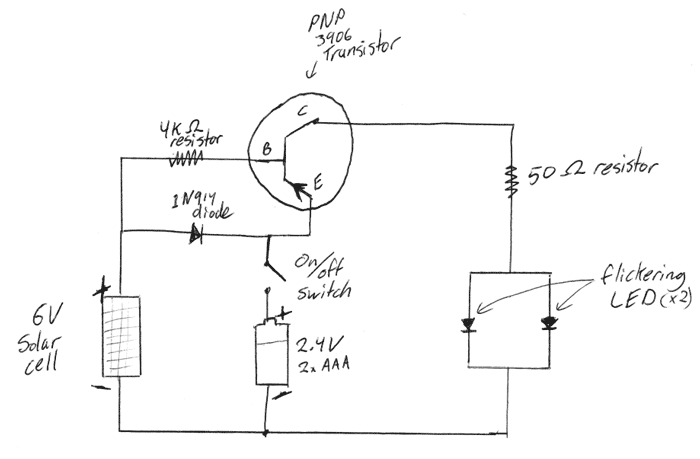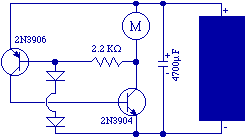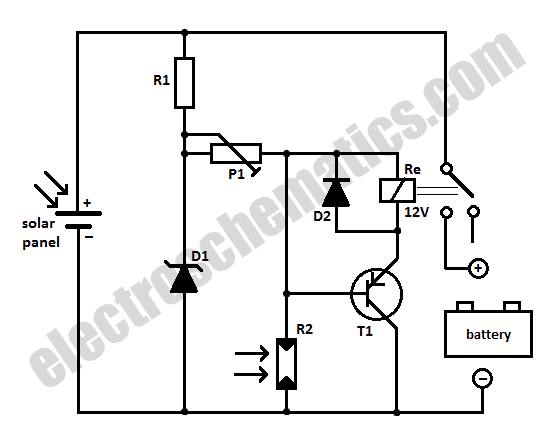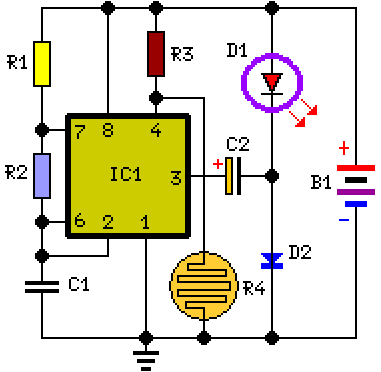
Solar Powered Lantern

This is a DIY electronics project designed to enhance circuit design and building techniques. Copper lanterns were purchased and fitted with a circuit similar to outdoor solar lights. The circuit design is adapted from a simple design found on Evil Mad Scientist, which serves as a good starting point. Modifications were made to allow the lanterns to operate indoors near a window, as most solar lights are intended for outdoor use and receive significantly more light. A 3V solar panel, when paired with a 2.4V battery, requires direct sunlight for charging, causing the light to activate before dusk. A 6V solar panel was selected to enable charging under indirect light through a window. However, a potential issue arises with overcharging the 2.4V batteries when using a 6V solar panel in direct sunlight. Despite this concern, the circuit has functioned effectively for over a year without issues. Assembly is straightforward, and a montage video demonstrates the building process. For outdoor use, additional waterproofing precautions are recommended.
This project involves creating a solar-powered lighting system using copper lanterns, which are modified to incorporate a solar charging circuit. The circuit's foundation is derived from established designs, specifically tailored for indoor use, ensuring functionality even with limited light exposure. The choice of a 6V solar panel is critical, as it allows for effective battery charging through indirect sunlight, mitigating the need for direct exposure.
The components of the circuit include the 6V solar panel, a rechargeable 2.4V battery, and a light-emitting diode (LED) or similar light source. The solar panel captures ambient light and converts it into electrical energy, which is used to charge the battery. The LED is connected in such a way that it illuminates when the battery reaches a certain voltage threshold, typically just before dusk, providing illumination without the need for manual operation.
Careful consideration is necessary regarding the potential for overcharging the battery when subjected to direct sunlight. To prevent this, a charge regulator or a diode may be incorporated into the design to limit the voltage reaching the battery, ensuring safe operation.
The assembly process involves securely mounting the solar panel to the lantern, connecting the battery and LED in the correct configuration, and ensuring that all connections are insulated to prevent short circuits. For outdoor applications, the lantern must be adequately sealed to prevent moisture ingress, which could damage the electronic components.
In summary, this DIY project not only serves as an engaging exercise in electronics but also results in a functional lighting solution that can efficiently operate in various light conditions, provided that appropriate precautions are taken to protect the circuit from environmental factors.This is a quick DIY electronics project I set for myself so I could brush up on my circuit design and some building techniques. I bought a couple copper lanterns off ebay and fitted them with a circuit similar to the outdoor solar lights you can buy for your yard.
Much of the circuit design is based on one of the simple designs on Evil Mad Scienti st. That`s a great page to get started with. I modified the circuit so that the lanterns could operate indoors near a window. Most solar lights, including the one on Evil Mad Scientist, are designed to be kept outdoors. So the solar panel gets a lot more light than one that`s kept indoors. If you use a 3V solar panel to match up with the 2. 4V battery, the panel needs to get direct sunlight to charge the battery, and the light will turn on well before it gets dark. I decided to use a 6V solar panel. This way it charges the battery with only indirect light through a window. One potential issue is that a 6V solar panel under direct sunlight could overcharge the 2. 4V batteries. Though, I`ve been running this circuit for over a year without any problems. Assembly is pretty straight forward. You can see how I built it in the montage video at the bottom of this post. If you want the light to run outside, you`ll need to take extra precautionsfor waterproofing. 🔗 External reference
This project involves creating a solar-powered lighting system using copper lanterns, which are modified to incorporate a solar charging circuit. The circuit's foundation is derived from established designs, specifically tailored for indoor use, ensuring functionality even with limited light exposure. The choice of a 6V solar panel is critical, as it allows for effective battery charging through indirect sunlight, mitigating the need for direct exposure.
The components of the circuit include the 6V solar panel, a rechargeable 2.4V battery, and a light-emitting diode (LED) or similar light source. The solar panel captures ambient light and converts it into electrical energy, which is used to charge the battery. The LED is connected in such a way that it illuminates when the battery reaches a certain voltage threshold, typically just before dusk, providing illumination without the need for manual operation.
Careful consideration is necessary regarding the potential for overcharging the battery when subjected to direct sunlight. To prevent this, a charge regulator or a diode may be incorporated into the design to limit the voltage reaching the battery, ensuring safe operation.
The assembly process involves securely mounting the solar panel to the lantern, connecting the battery and LED in the correct configuration, and ensuring that all connections are insulated to prevent short circuits. For outdoor applications, the lantern must be adequately sealed to prevent moisture ingress, which could damage the electronic components.
In summary, this DIY project not only serves as an engaging exercise in electronics but also results in a functional lighting solution that can efficiently operate in various light conditions, provided that appropriate precautions are taken to protect the circuit from environmental factors.This is a quick DIY electronics project I set for myself so I could brush up on my circuit design and some building techniques. I bought a couple copper lanterns off ebay and fitted them with a circuit similar to the outdoor solar lights you can buy for your yard.
Much of the circuit design is based on one of the simple designs on Evil Mad Scienti st. That`s a great page to get started with. I modified the circuit so that the lanterns could operate indoors near a window. Most solar lights, including the one on Evil Mad Scientist, are designed to be kept outdoors. So the solar panel gets a lot more light than one that`s kept indoors. If you use a 3V solar panel to match up with the 2. 4V battery, the panel needs to get direct sunlight to charge the battery, and the light will turn on well before it gets dark. I decided to use a 6V solar panel. This way it charges the battery with only indirect light through a window. One potential issue is that a 6V solar panel under direct sunlight could overcharge the 2. 4V batteries. Though, I`ve been running this circuit for over a year without any problems. Assembly is pretty straight forward. You can see how I built it in the montage video at the bottom of this post. If you want the light to run outside, you`ll need to take extra precautionsfor waterproofing. 🔗 External reference





